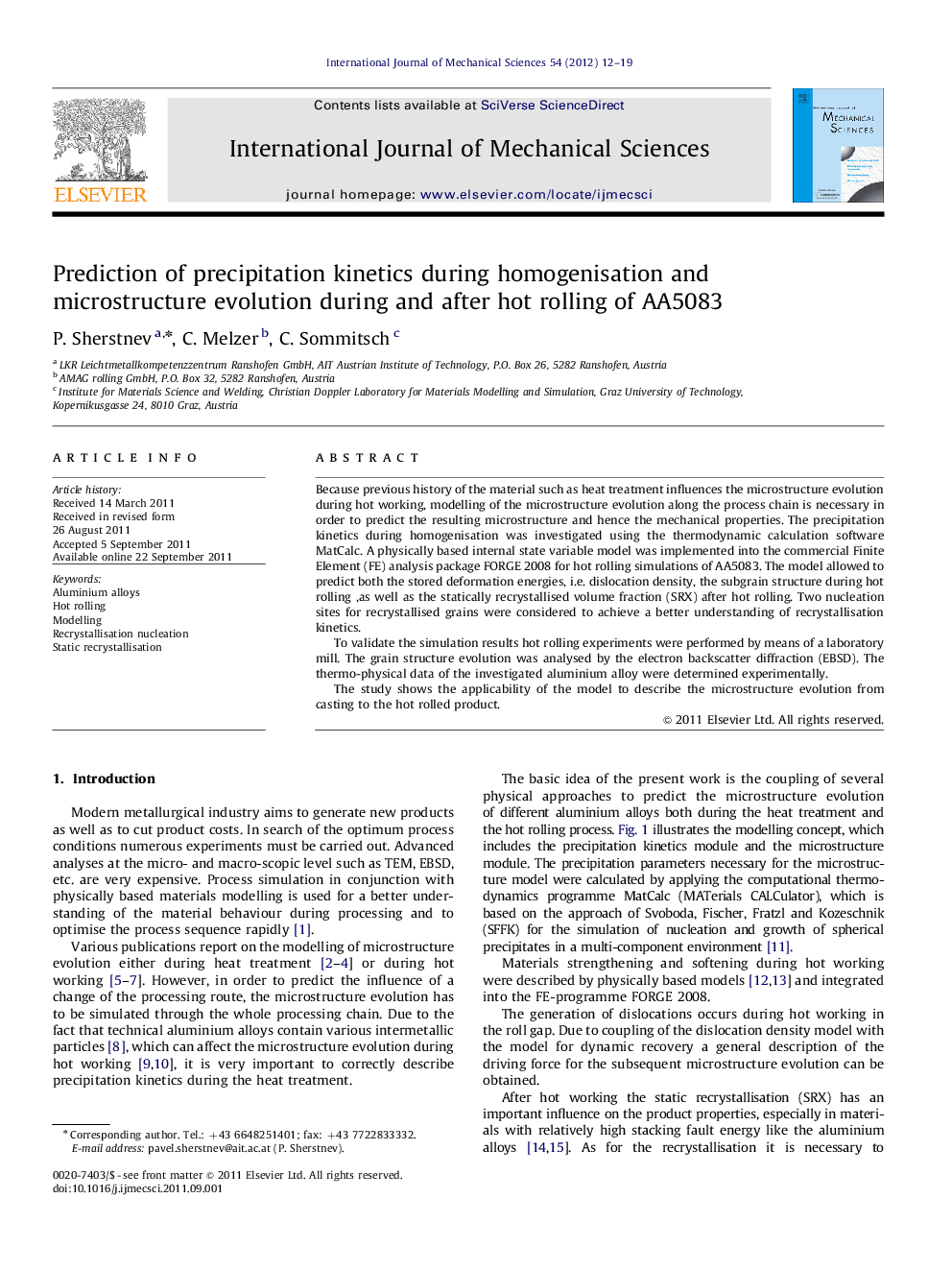| Article ID | Journal | Published Year | Pages | File Type |
|---|---|---|---|---|
| 782472 | International Journal of Mechanical Sciences | 2012 | 8 Pages |
Because previous history of the material such as heat treatment influences the microstructure evolution during hot working, modelling of the microstructure evolution along the process chain is necessary in order to predict the resulting microstructure and hence the mechanical properties. The precipitation kinetics during homogenisation was investigated using the thermodynamic calculation software MatCalc. A physically based internal state variable model was implemented into the commercial Finite Element (FE) analysis package FORGE 2008 for hot rolling simulations of AA5083. The model allowed to predict both the stored deformation energies, i.e. dislocation density, the subgrain structure during hot rolling ,as well as the statically recrystallised volume fraction (SRX) after hot rolling. Two nucleation sites for recrystallised grains were considered to achieve a better understanding of recrystallisation kinetics.To validate the simulation results hot rolling experiments were performed by means of a laboratory mill. The grain structure evolution was analysed by the electron backscatter diffraction (EBSD). The thermo-physical data of the investigated aluminium alloy were determined experimentally.The study shows the applicability of the model to describe the microstructure evolution from casting to the hot rolled product.
► A new modelling concept to predict the microstructure evolution of AA5083 both during homogenisation and hot rolling. ► Implementation of physically based models into the FE programme FORGE. ► Consideration of the heat treatment on the microstructure evolution during hot rolling.
